Kristine Hughes's Blog, page 89
July 30, 2014
THE WELLINGTON CONNECTION: THE BRITISH EMBASSY IN PARIS
 L’hôtel de Charost, the British Embassy in Paris, 39 rue du Faubourg Saint-Honoré
L’hôtel de Charost, the British Embassy in Paris, 39 rue du Faubourg Saint-HonoréIn August, 1814, after the first defeat of Napoleon and his exile to Elba, the Duke of Wellington purchased l’hôtel de Charost to be the British Embassy in Paris. Before that, representatives of the British crown had used various rented facilities. This year, the Embassy celebrates 200 years at the site, scene of numerous receptions, dinners, and other official events through the years of peace and friendship between France and Great Britain.
 Canova: Pauline Borghese, the Borghese Palace, Rome
Canova: Pauline Borghese, the Borghese Palace, RomeThe building was purchased from Napoleon's sister, Pauline Buonaparte Borghese, wife of Camillo Borghese, 6th Prince of Sulmona. A replica of the renowned sculpture stands in the British Embassy. Pauline (1780-1825) was beautiful, charming, and unscrupulous. She was first married to one of Napoleon's generals, and after his death, to Prince Borghese. For more about Pauline, go to Elizabeth Kerri Mahon's blog here.
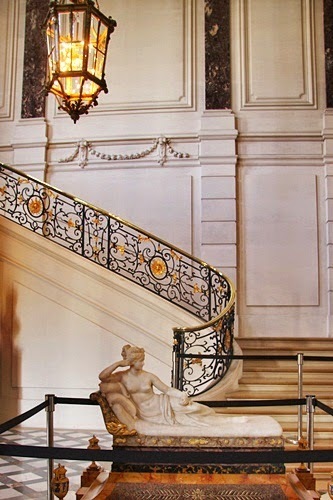 The ReplicaMr. Quintin Crawford, a British resident in Paris, assisted in the purchase, according to the 1983 book by Raymond A. Jones, The British Diplomatic Service 1815-1914. Crawford (1748-1814) was born in Scotland; he was a businessman, collector, author and translator.
The ReplicaMr. Quintin Crawford, a British resident in Paris, assisted in the purchase, according to the 1983 book by Raymond A. Jones, The British Diplomatic Service 1815-1914. Crawford (1748-1814) was born in Scotland; he was a businessman, collector, author and translator.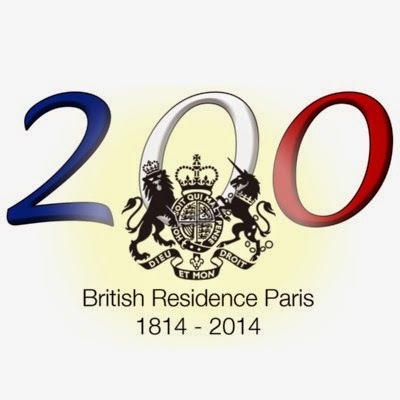
This year the British Embassy in Paris is celebrating its purchase by the newly appointed Ambassador in 1814, the 1st Duke of Wellington.
Like so many Paris buildings, inside the rather forbidding street entrance (top picture) there is a lovely courtyard and the handsome formal entrance.
 The Queen arrives on her recent State Visit to France
The Queen arrives on her recent State Visit to France Interior FaçadeThe building was erected in 1722-25, designed by architect Antoine Mazin, (c1679-1725). The first owner was the duc de Charost. In 1803, Pauline, the sister of Napoleon and later Princess Borghese, purchased the house. She was known to hold popular salons, almost subsidiary courts, there.
Interior FaçadeThe building was erected in 1722-25, designed by architect Antoine Mazin, (c1679-1725). The first owner was the duc de Charost. In 1803, Pauline, the sister of Napoleon and later Princess Borghese, purchased the house. She was known to hold popular salons, almost subsidiary courts, there.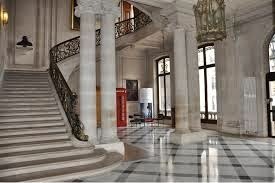 Entrance Hall
Entrance Hall The Queen signs in, 2014!
The Queen signs in, 2014! She is well guarded
She is well guarded
 The Bleu Salon
The Bleu Salon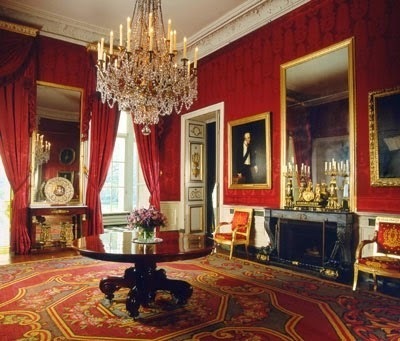 The Red RoomNote the portrait of the aged Duke of Wellington on the wall
The Red RoomNote the portrait of the aged Duke of Wellington on the wall Salon Pauline
Salon Pauline A 2012 Reception at the Embassy
A 2012 Reception at the Embassy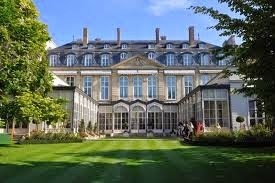 The Garden reaches almost to the Champs Élysées;it is often the scene of receptions
The Garden reaches almost to the Champs Élysées;it is often the scene of receptions The Queen among the roses
The Queen among the roses
Two views of the Dining Salon, above and below.


Impressive chandeliers, above and below.

Happy 200th Birthday, British Embassy in Paris!Well done, Ambassador Wellington.
Published on July 30, 2014 00:00
July 28, 2014
THE WELLINGTON CONNECTION - TOURISTS
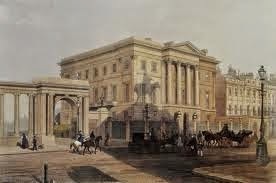
In 1850, the Duke of Wellington replied to a letter written to him by Lady Salisbury inquiring as to how best she and Lord Salisbury should deal with those who applied to them with requests to see their home, Hatfield House. In other words, how best to deal with 19th century tourists. The Duke answered her thusly:
London, July 27, 1850
" . . . . . I permit my servants to show the House and Place to whom they please and as they please. But I avoid to give an order that anything should be shown to anybody. I enclose the Lithograph answer sent to every application. You will find some regulation of the same description very convenient to yourself and Lord Salisbury. . . . . . "
Copy of Lithograph
Field Marshal The Duke of Wellington presents his compliments. He is not in the habit of giving orders to his Servants to show his House or its contents to Gentlemen with whom he is not acquainted. They are responsible for the good, cleanly and safe keeping thereof, and they must form their own judgment as to whom they will admit to see it, taking care always that those whom they may admit do not interfere with the convenient occupation of their apartments by his son, his daughter-in-law and himself.
Unfortunately, the Duke was also plagued with requests from tourists at Walmer Castle, as the following letter to Lady Salisbury the following September illustrates -
Walmer, September 19, 1850
". . . . . You are amused by the applications made to me. I have had a most curious one from one of the young ladies who were in the habit, as children, of coming to my Garden Gate in Hyde Park. This young lady is now with some friends a Broadstairs! and she insists upon my sending her an order that the interior of Walmer Castle should be shewn to her and her friends during the time that I am residing there; at which time, she has heard that the interior of the Castle is not usually shewn. I have told her that my Predecessor in the office of Lord Warden had fitted up part of this Castle as a residence for the Lard Wardens, which I now occupy! that I have one room in this Residence, in which I sleep, dress and write all day! that the remainder of the House is occupied by my daughters-in-law and their Children or by other visitors, male or female! That I permitted the Servants to shew to whom they pleased, excepting when inhabited. But at such periods only when not inconvenient to the inhabitants. I added that I believed that I was the only individual in England who would be required by anybody to make a shew of his Bed Room and Dressing Room; and that I doubted much whether my daughters-in-law, or their Children, or any Ladies or Gentlemen, inhabitants of Rooms in this Residence, would much like the proposition that their Rooms should be made a shew of while they should inhabit them. I have received no answer."
One can only imagine what the Duke would think about a group of tourists arranging visits to Apsley House, Walmer Castle and Stratfield Saye or about their titling their journey The Duke of Wellington Tour!
Published on July 28, 2014 00:00
July 25, 2014
THE DUKE OF WELLINGTON TOUR: LONDON FOOD

I am gasping for a cuppa. A cuppa coffee at Caffe Nero, that is. I can't get enough of it and now that London is once again in my sights, I'm lusting for one. Turns out that Denise Costello, who is coming along on The Duke of Wellington Tour with us in September, is also a devotee. We've struck a bargain to see who will be the first to reach the eleventh free coffee Caffe Nero awards on their loyalty card.
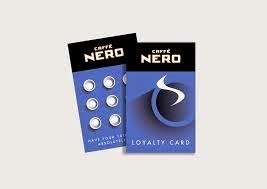
I have a sneaking idea we'll be reaching the target together.
Dreaming of my next cup of coffee in London got me thinking about the other London foods I usually indulge in - old favourites that never disappoint. Like bangers and mash.
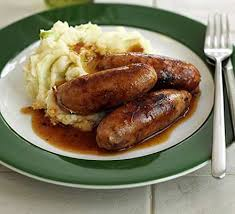
As Victoria well knows, bangers and mash are my "go to" food, my comfort food and what I can be counted upon to order, at least once a day. Add grilled onions and a side of green peas and it's heaven. Of course, one can't eat bangers and mash without washing it down with a pint and, oddly enough, my brew of choice in England is Kronenbourg 1664, which sounds German, but is brewed in France. And since I drink it in England, that's most of the Waterloo nations covered.
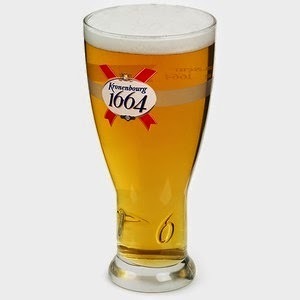
I always try to visit London's Chinatown when I'm in London, specifically for the roasted Peking duck that hangs tantalizingly in most windows there.

I was introduced to Chinatown many years ago by Dr. David Parker, who was then the curator of the Dickens House Museum. I've been returning ever since and will no doubt be popping in again in September. You can read about the history of the area here.
No trip to London would be complete without indulging in afternoon tea and my place of choice are the Richoux Tea Rooms on Piccadilly. There are fancier places, and trendier places, for tea, but Richoux is the grand old lady of tea shop chains, dependably good, always cozy. Rather like a visit to granny's.
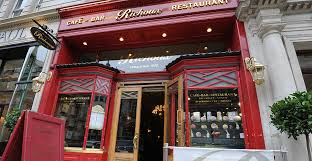
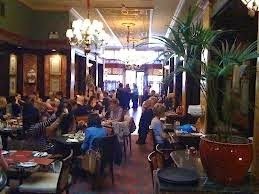
Regency author Diane Gaston, who also blogs at Risky Regencies, has signed up for the Tour and, along with Victoria, we're looking forward to returning to Richoux during our Sunday walking tour of the St. James's area of London.
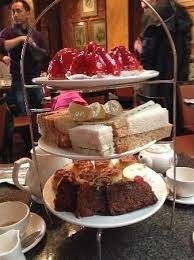
Finally, because I'm such a cheese lover, I'm going to make a point of stopping in to Paxton and Whitfield in Jermyn Street.
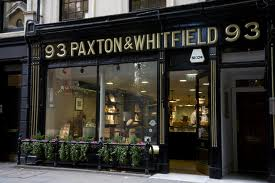
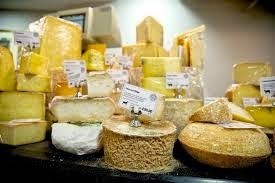
It's one of those places I've always meant to spend time in and that I never seem to get around to visiting. You can read about the history of the shop - since 1797 - here.
Honourable mention goes out to the American Steak House, the Angus Steak House and the Aberdeen Steak House, three chains with outlets throughout London. They're literally everywhere.
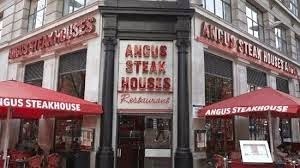
Priced right, these places are nothing fancy, but the steaks can be depended upon and they're convenient.
Honourable mention also to Burger and Lobster, which I discovered on my last trip to London - you can read about it here.
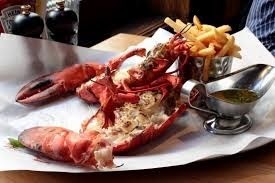
Burger and Lobster has a rather limited menu - lobster, burger or lobster roll. Twenty pounds each. The lobsters are cooked perfectly, the drinks ditto, so be prepared to wait for a table. They don't take reservations, but definitely worth the visit.
Do you have a favourite "foodie" destination in London? If so, please leave a comment and let us know about it!
Published on July 25, 2014 00:00
July 23, 2014
VICTORIA AND KRISTINE GO TO WATERLOO REDUX
Victoria here, writing about the presentation I am making on Wednesday, July 23, 2014, to the Beau Monde conference in San Antonio: The Battle of Waterloo and A Visit to the Battleground, June, 2010.
 Hero of the day, the 1st Duke of Wellington
Hero of the day, the 1st Duke of Wellington
We have written many times on this blog about Waterloo, the battle, and our visit. The most complete account is here. I'll be using many of the same pictures in my talk in San Antonio.
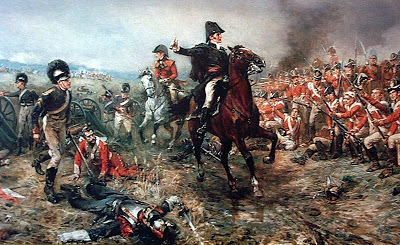 Wellington, portrayed at the decisive moment of Coalition victoryRobert A. Hillingford Artist
Wellington, portrayed at the decisive moment of Coalition victoryRobert A. Hillingford Artist
However my emphasis for the writers of Regency-set Historical Novels is a bit broader. What led up to Waterloo and what did it mean in the grand sweep of history? A bit of analysis and a lot of significance.
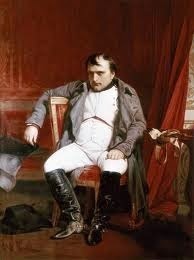 Napoleon in Exile
Napoleon in Exile
After almost a century of war among the European powers, particularly between Britain and France, Napoleon abdicated in June 1814 and was sent to Elba where he was to rule just one relatively small island.
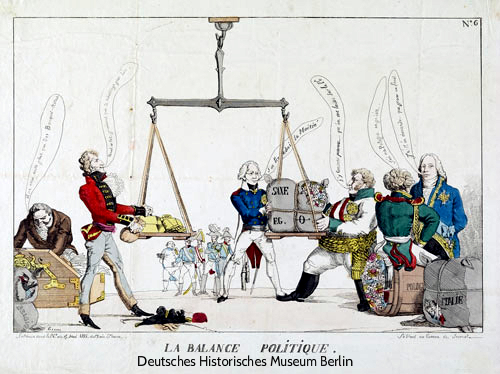
Meanwhile, the European Powers convened the Congress of Vienna to decide what to do with the lands Napoleon had attempted to annex to his empire. In the midst of the Vienna consultations, in February 1815, Napoleon escaped from Elba and returned to France. Within a short period he had reestablished his reign, returned to Paris, and assembled an army. The Congress declared him an outlaw, set up a new Army of the 7th Coalition, and continued its deliberations.
In June, 1815, Napoleon and his army marched north into Belgium (then the Kingdom of the Netherlands) where he hoped to take Brussels as the first step in reasserting his imperial powers. Two of the 7th Coalition armies were nearby; Napoleon hoped to prevent them from joining together.
In the two days of battle and maneuvers that preceded Sunday June 18, Napoleon was almost successful.
But on the fateful day, Wellington's forces were able to hold off and ultimately defeat the French; the Prussians under General Blucher arrived in the nick of time. For all practical purposes, Napoleon was forever finished.
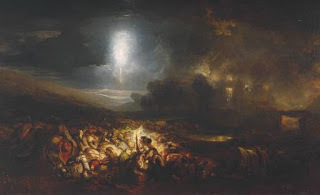 Waterloo after the battle by Joseph Mallord William Turner RA (1775–1851), Tate Britain
Waterloo after the battle by Joseph Mallord William Turner RA (1775–1851), Tate Britain
Turner's painting portrays the horrors of the aftermath, the wounded and dying men and horses, the mud, the searching and grieving friends and relatives, the scavengers, the essential darkness. To stand before it is to feel in your bones the horror of war.
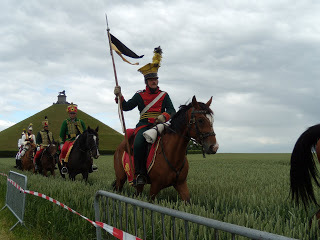 The re-enactors of 2010
The re-enactors of 2010
In June of 2010, Kristine and I toured the battlefields of the three-day campaign, visited the encampments of the re-enactors from all over Europe, and watched the actual staging of part of the battle itself.
 June 18, 2010
June 18, 2010
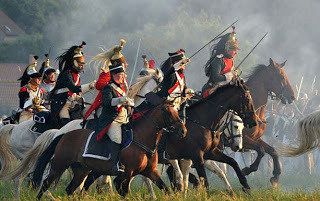 Cavalry charges
Cavalry charges
After Napoleon surrendered once again, he was sent to the remote south Atlantic island of St. Helena where he died in 1821. The settlements signed at the Congress of Vienna were put into effect and there was a general peace, with short intervals of smaller wars, until the outbreak of World War I, almost a hundred years later. In fact WWI prevented any important commemorations of Waterloo, so next year will be a particularly important tribute and memorial.
For more information on Waterloo200, click here.
A modern take of what enabled the Coalition victory under Wellington over Napoleon is here (50 mins, from Youtube). It gives a modern take on why the French were defeated.
 Hero of the day, the 1st Duke of Wellington
Hero of the day, the 1st Duke of WellingtonWe have written many times on this blog about Waterloo, the battle, and our visit. The most complete account is here. I'll be using many of the same pictures in my talk in San Antonio.
 Wellington, portrayed at the decisive moment of Coalition victoryRobert A. Hillingford Artist
Wellington, portrayed at the decisive moment of Coalition victoryRobert A. Hillingford ArtistHowever my emphasis for the writers of Regency-set Historical Novels is a bit broader. What led up to Waterloo and what did it mean in the grand sweep of history? A bit of analysis and a lot of significance.
 Napoleon in Exile
Napoleon in ExileAfter almost a century of war among the European powers, particularly between Britain and France, Napoleon abdicated in June 1814 and was sent to Elba where he was to rule just one relatively small island.

Meanwhile, the European Powers convened the Congress of Vienna to decide what to do with the lands Napoleon had attempted to annex to his empire. In the midst of the Vienna consultations, in February 1815, Napoleon escaped from Elba and returned to France. Within a short period he had reestablished his reign, returned to Paris, and assembled an army. The Congress declared him an outlaw, set up a new Army of the 7th Coalition, and continued its deliberations.
In June, 1815, Napoleon and his army marched north into Belgium (then the Kingdom of the Netherlands) where he hoped to take Brussels as the first step in reasserting his imperial powers. Two of the 7th Coalition armies were nearby; Napoleon hoped to prevent them from joining together.
In the two days of battle and maneuvers that preceded Sunday June 18, Napoleon was almost successful.
But on the fateful day, Wellington's forces were able to hold off and ultimately defeat the French; the Prussians under General Blucher arrived in the nick of time. For all practical purposes, Napoleon was forever finished.
 Waterloo after the battle by Joseph Mallord William Turner RA (1775–1851), Tate Britain
Waterloo after the battle by Joseph Mallord William Turner RA (1775–1851), Tate BritainTurner's painting portrays the horrors of the aftermath, the wounded and dying men and horses, the mud, the searching and grieving friends and relatives, the scavengers, the essential darkness. To stand before it is to feel in your bones the horror of war.
 The re-enactors of 2010
The re-enactors of 2010In June of 2010, Kristine and I toured the battlefields of the three-day campaign, visited the encampments of the re-enactors from all over Europe, and watched the actual staging of part of the battle itself.
 June 18, 2010
June 18, 2010 Cavalry charges
Cavalry chargesAfter Napoleon surrendered once again, he was sent to the remote south Atlantic island of St. Helena where he died in 1821. The settlements signed at the Congress of Vienna were put into effect and there was a general peace, with short intervals of smaller wars, until the outbreak of World War I, almost a hundred years later. In fact WWI prevented any important commemorations of Waterloo, so next year will be a particularly important tribute and memorial.
For more information on Waterloo200, click here.
A modern take of what enabled the Coalition victory under Wellington over Napoleon is here (50 mins, from Youtube). It gives a modern take on why the French were defeated.
Published on July 23, 2014 00:00
July 21, 2014
ACROSS THE CHANNEL
Victoria here, doing a few web searches on what I want to see on my upcoming trip to Paris and cruise on the Seine.
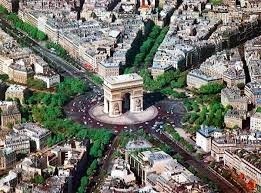 Arc de Triomphe
Arc de Triomphe
Hubby and I have been to Paris several times, so we really don't need to re-visit The Louvre, the Musée Carnavalet, Place des Vosges, Montmartre, or the Eiffel Tower. We've seen Napoleon's tomb in Les Invalides, the Pompidou Center, Musée'Orsay, and the spectacular Notre Dame Cathedral and the nearby Sainte-Chapelle. Not that we would be disappointed in seeing any of those wonderful places again, but with so much more available, we need to wander a bit farther afield, find things out of the ordinary. Anybody have any suggestions??
 le Tour Eiffel
le Tour Eiffel
I'm thinking about some of the small museums such as the Musée Cluny with its Medieval treasures.
 15th C. tapestry, Lady and the Unicorn
15th C. tapestry, Lady and the Unicorn
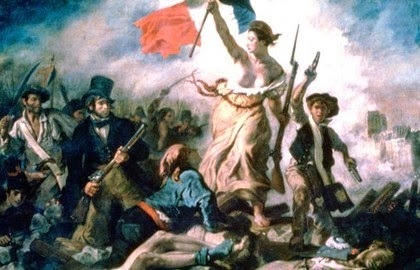 Eugene Delacroix, Liberty Leading the People
Eugene Delacroix, Liberty Leading the People
The Musée Delacroix is housed in the building in which he lived and died in 1863.
 Musée Rodin.
Musée Rodin.
The Rodin Museum looks like fun, if just for the building alone, much less the opportunity to get up close and personal with The Thinker!
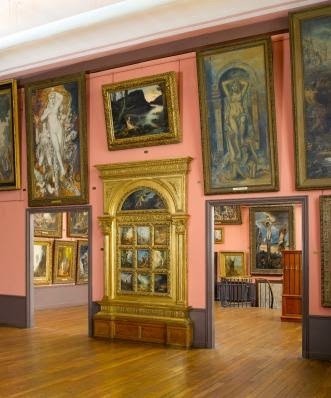 Musée Gustave Moreau
Musée Gustave Moreau
I saw an article in the NY Times a while ago about a fascinating small museum called Musée Gustave Moreau (to read it click here). We will try to find that one too.
I am hoping to take a day to go to Josephine's Malmaison, just on the edge of the city. She is such an interesting character, and I am fascinated by her life. I have read -- and believe -- she was able, in the midst of all the French-British wars, to receive her beautiful English roses for her garden. Both sides of the Channel apparently would do anything for her!
 Chateau de Malmaison
Chateau de Malmaison
 Josephine's bedroom at Malmaison
Josephine's bedroom at Malmaison
There is a very amusing irony in the love of the British for all things French. And in the fascination of the French with all things British. Even after decades of war and managing to defeat Napoleon, the Prince Regent (later George IV) accumulated all sorts of furniture, decorative arts, paintings and sculpture from France. Tours of Windsor Castle and Buckingham Palace clearly indicate the royal preferences for the styles of Louis XIV, XV, and even XVI.
 Buckingham Palace White Drawing Room
Buckingham Palace White Drawing Room
Which makes me think of Versailles. It's on our schedule -- I was there once, but spent almost all my time inside. This visit I intend to emphasize the gardens.
 Versailles
Versailles
Attendez! Wait! We'll be in Paris. Why go anyplace other than a café? A bit of people watching and a glass of Sauvignon Blanc? Parfait!! Merci beaucoup. Plenty of cafes for a different one every day.

 Arc de Triomphe
Arc de TriompheHubby and I have been to Paris several times, so we really don't need to re-visit The Louvre, the Musée Carnavalet, Place des Vosges, Montmartre, or the Eiffel Tower. We've seen Napoleon's tomb in Les Invalides, the Pompidou Center, Musée'Orsay, and the spectacular Notre Dame Cathedral and the nearby Sainte-Chapelle. Not that we would be disappointed in seeing any of those wonderful places again, but with so much more available, we need to wander a bit farther afield, find things out of the ordinary. Anybody have any suggestions??
 le Tour Eiffel
le Tour EiffelI'm thinking about some of the small museums such as the Musée Cluny with its Medieval treasures.
 15th C. tapestry, Lady and the Unicorn
15th C. tapestry, Lady and the Unicorn Eugene Delacroix, Liberty Leading the People
Eugene Delacroix, Liberty Leading the PeopleThe Musée Delacroix is housed in the building in which he lived and died in 1863.
 Musée Rodin.
Musée Rodin.The Rodin Museum looks like fun, if just for the building alone, much less the opportunity to get up close and personal with The Thinker!
 Musée Gustave Moreau
Musée Gustave Moreau I saw an article in the NY Times a while ago about a fascinating small museum called Musée Gustave Moreau (to read it click here). We will try to find that one too.
I am hoping to take a day to go to Josephine's Malmaison, just on the edge of the city. She is such an interesting character, and I am fascinated by her life. I have read -- and believe -- she was able, in the midst of all the French-British wars, to receive her beautiful English roses for her garden. Both sides of the Channel apparently would do anything for her!
 Chateau de Malmaison
Chateau de Malmaison Josephine's bedroom at Malmaison
Josephine's bedroom at MalmaisonThere is a very amusing irony in the love of the British for all things French. And in the fascination of the French with all things British. Even after decades of war and managing to defeat Napoleon, the Prince Regent (later George IV) accumulated all sorts of furniture, decorative arts, paintings and sculpture from France. Tours of Windsor Castle and Buckingham Palace clearly indicate the royal preferences for the styles of Louis XIV, XV, and even XVI.
 Buckingham Palace White Drawing Room
Buckingham Palace White Drawing RoomWhich makes me think of Versailles. It's on our schedule -- I was there once, but spent almost all my time inside. This visit I intend to emphasize the gardens.
 Versailles
VersaillesAttendez! Wait! We'll be in Paris. Why go anyplace other than a café? A bit of people watching and a glass of Sauvignon Blanc? Parfait!! Merci beaucoup. Plenty of cafes for a different one every day.

Published on July 21, 2014 00:30
July 18, 2014
THE DUCHESS OF WELLINGTON
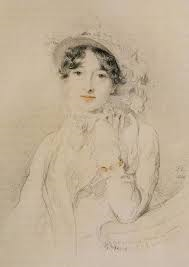
Catherine (Kitty) Pakenham married Arthur Wellesley on 10 April, 1806. To say that their marriage was not a happy one would be an understatement. For anyone who is unfamiliar with the story, you can read Kitty's biography and gain some insight into the relationship between the Duke and Duchess on Wikipedia. Wellington moved in circles that were not unfamiliar to Kitty, yet she never fit in and, more importantly, never made the slightest effort to do so. None of Wellington's friends became her friends, which is stranger still, as the Duke had several ladies in his circle who could have been an asset to Kitty, both personally and politically. In this post, we'll be gaining insight into what Kitty's contemporaries thought about her via their letters and diary journals.

From Princess Lieven (below) to Metternich, March 1, 1820 - I have been obliged to promise the Duke of Wellington to visit him in the country (Stratfield Saye, above) tomorrow. You have no idea how much it bores me and puts me out. He has unfortunately taken it into his head that his house is the most comfortable in the world. Well, there are two very definite drawbacks to that comfort. It is always cold there, and his wife is stupid. What’s to be done?

Mrs. Arbuthnot, October 27, 1825 - . . . I think the Duke's unfortunate marriage has pursued him even in his relations with his children. He dreads their inheriting her narrow mind and he says, instead of directing them to useful pursuits or uging them to read or to occupy their time, she is continually seeking out for them the most trivial and childish amusements. She certainly is the silliest woman I have ever met with, and I must own I think she now does not appear to have the slightest desire to please him. She does not comply with any of his fancies in the arrangement of his house, and in truth it is so bad a menage it is quite disagreeable to be in the house. It is hopeless, too; if she had good sense all would now be right, for what he now wants is a comfortable home, but she is totally unfit for her situation. She is like the housekeeper and dresses herself exactly like a shepherdess, with an old hat made by herself stuck at the back of her head, and a dirty basket under her arm. The Duke says he is sure she is mad.
Lady Shelley - The Duchess of Wellington "sat apart from her guests, dressed, even in winter, in white muslin, without any ornaments, when everyone else was in full dress . . . She seldom spoke, but looked through her eyeglass lovingly upon the Duke, who sat opposite to her."
Mrs. Arbuthnot - February 16, 1830 . . . . . He (the Duke) is entirely occupied and engrossed with public matters, cannot look after his private affairs and there is no one who can do it for him, for his wife has not sense enough and rather encourages his servants and people to cheat him. Not that she is extravagant in herself for she is generally dressed like a beggar, but from mere folly.

Kitty's health began to fail and she became seriously ill in 1831, when she was confined to her bed at Apsley House (above), where the Duke of Wellington kept vigil at her bedside. At one point, Kitty ran a finger up his sleeve to find if he was still wearing an amulet she had once given him, "She found it, as she would have at any time these past twenty years, had she cared to look for it" remarked Wellington.
Kitty was visited by friends such as Maria Edgeworth and lingered for some time before passing away on 24 April. In a bittersweet twist, it appears that the Duke and Duchess of Wellington finally had a meeting of minds at the end, for Wellington afterwards remarked, "How strange it was that people could live together for half a lifetime and only understand each other at the end."
Sadder still, within the Duke's circle, Kitty's death was merely mentioned as an afterthought:
Mrs. Arbuthnot - June 18, 1831 - . . . . I have omitted to mention the death of the Dss of Wellington, which happened on the 24th of April. She had been ill very long and without any hope of recovery, so that it was a relief at last. She died in London and was buried at Stratfield Saye.
Join us as we visit the Duchess of Wellington's houses - Apsley House and Stratfield Saye - and explore more of Kitty's life and times during the Duke of Wellington Tour in September.
Published on July 18, 2014 00:00
July 16, 2014
THE WELLINGTON CONNECTION - POCKETBOOKS
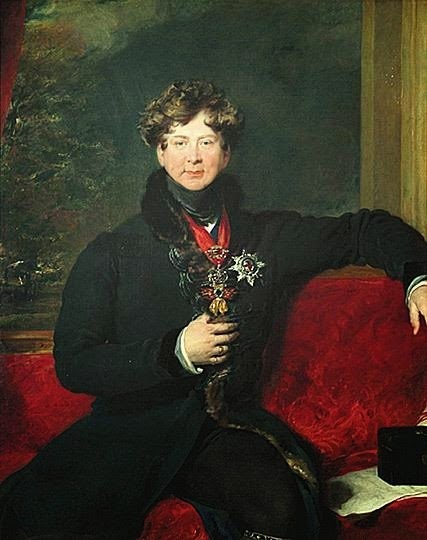
From A Sketch of the Life of Georgiana, Lady de Ros (1893)
1836.—George IV had, from the time he was quite a young man, been in the habit of carrying about him a douillette pocketbook, into which he used to put money, letters, trinkets, miniatures, and any of the numerous fans, odd gloves, locks of hair, and similar keepsakes which he was always adding to his stock from all quarters. As soon as his pocket-book became full, he used to put it away in a drawer without ever troubling himself to examine its present contents or take out whatever money it might contain, mixed with the miscellaneous articles. Whenever he thus put away a full pocket-book, he took another to replace it from a great stock of new ones he kept by him, and this, as soon as filled, was laid by and replaced in like manner. At the time of his death it devolved upon the Duke and another to examine the personal effects of the King, and accordingly they had to look over the contents of a whole chest of drawers entirely filled with these pocket-books, filled and stowed away by the King from the time he was a young man. When the Duke first looked at one of them, and found the toys it contained, he was about to have the whole stock burnt, but some money accidentally fell out, which led to a careful scrutiny of others, and they actually collected in various sums no less than ,£10,000 from these pocket-books, after which they caused them to be destroyed with their less important contents.
Note: Between them, Wellington and Mrs. Fitzherbert consigned most of Prinny's private items and papers to the fire.
Published on July 16, 2014 00:30
July 14, 2014
AND FROM ELSEWHERE ON THE WEB . . . . . .

Lucy Worsley - Britain's funniest, cleverest and fattest queen ever - Queen Caroline
Discover Medical London - The Handsome Hoaxer of Harley Street
Sir John Soane's Museum - Adam's London: Then and Now - 33 St. James's Square
British Newspaper Archives - Top 5 April Fools Day jokes in history, found in British newspapers dating back to the 1700s
Gizmodo - The Fascinating Untold History of War and Prosthetics
Londontopia - What Heathrow looked like before it became an airport
Published on July 14, 2014 00:00
July 11, 2014
SWAN UPPING: AN ANNUAL EVENT

Every year the swans on the Thames River are caught, examined, and tagged in an annual census conducted by the Royal Swan Keepers and the Vintners' and Dyers' Livery Companies. The process will begin on Monday, July 14, in Sunbury and end on Friday July 18 at Abingdon, Oxon.
David Barber, The Queen’s Swan Marker, hopes to find an increase in the number of cygnets:
“There have been reports of many successful breeding pairs with larger broods than normal, which is extremely positive news after several years of decreasing cygnet numbers...All cygnets and parent birds are checked for injuries during Swan Upping week and treated accordingly."
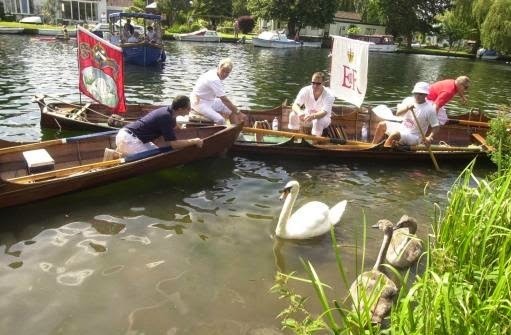
Since the 12th century, the Crown owns all mute swans in the Realm, though the Queen only asserts this right on parts of the Thames. Long ago, swans were a delicacy on the dining table, but they are no longer eaten.
In 2009, for the first time in centuries, the monarch observed Swan Upping.

Here is the official announcement for 2014.
Download a copy of the Swan Upping educational booklet here
The History of Swan Upping and a video explaining the annual ceremonies is here
More history of Swan Upping is here.
Victoria here, bringing you some pictures of royal mute swans. I took these a while ago.
 Playing tag with the ducks?
Playing tag with the ducks?
 Way too rude to be royal! The swans in the picture above were gathered at the dock of the Thames Cruise Boats, hoping for a handout. This Thames Cruise, perhaps complete with swan swarms, will be one of our final activities on the Duke of Wellington Tour, September 4-14, 2014. Limited space remains and the final day for sign-up will be July 31. But don't wait.
Way too rude to be royal! The swans in the picture above were gathered at the dock of the Thames Cruise Boats, hoping for a handout. This Thames Cruise, perhaps complete with swan swarms, will be one of our final activities on the Duke of Wellington Tour, September 4-14, 2014. Limited space remains and the final day for sign-up will be July 31. But don't wait.
 Itinerary and details here.
Itinerary and details here.
Published on July 11, 2014 00:30
July 9, 2014
HELP! I'M ADDICTED TO CORONATION STREET- PART 2
As you may know, I've posted before about my Coronation Street addiction. Thanks to Auntie Corrie on YouTube, I've been able to start watching Coronation Street from 1976 on. I'm now up to the later part of 1988 and Auntie Corrie's playlists are done - help! Of course, I could go on to the many websites that play later episodes - 2000 to present, say, but that's the whole of the 90's missed. Aaarrgggh.
And I've got to say, I've had too much to deal with already without missing out on an entire decade of Corrie.
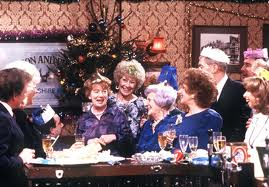
Hilda's gone!(Watch episode here)

Brian's dead!(Watch scene here)

Bet's married!(Watch episode here)
And there's more - Ivy's nuts! Gail's with Martin! Mavis is married to Derek! Mike Baldwin's still a cad!
All this may go some way to show why I'm dragging Victoria off to the wilds of Manchester whilst we're in England for the Duke of Wellington Tour so that I can visit the tour of the Coronation Street set.
Is anyone else a Corrie fan? If so, please leave a comment here and let me know which decade of Corrie is your favorite.
Gorron, you know you're a Corrie fan.
What are ya?
Published on July 09, 2014 00:00
Kristine Hughes's Blog
- Kristine Hughes's profile
- 6 followers
Kristine Hughes isn't a Goodreads Author
(yet),
but they
do have a blog,
so here are some recent posts imported from
their feed.



